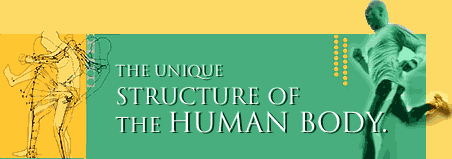|
|
|
|
|
| November 3, 2000 |
 
NETIZEN'S GUIDE TO ONLINE HEALTH.Dr. Nitin Chhoda. Sports Medicine Specialist.Ssshhh...Do you want to hear the biggest and the best kept secret in the world of fitness and exercise? The recipe that gives you all the fitness and well being that you'll ever need, all in one source? The storehouse, that will never run dry, and never pull a fast one on you, and will always stand the test of time, come rain or shine? Well, what is it? Is it a drug? A new machine ? Some magical innovation? A herbal concoction? Here's a clue. It's not a pharmaceutical breakthrough, and neither is it related to any fitness equipment. It's not a recent innovation but it's a result of millions of years of evolution given to you in a platter. It gives you total control, it is perfectly legal, and there are no side effects, if you value the system and follow a few basic principles. Well, what is it? (Drum roll, please)......... surprise, surprise, it's the human body. Let's try and take a simple look at it from 3 angles, and also the relevance of these angles, in your day-to-day life. -
1. The way it's structured The configuration of the human body consists of the body structure (bones, joints, muscles, organs etc.) All of us have a similar structure, but some are tall, some short, some broad, and some extremely thin. Can you change your body structure? No way, you can't. Once past puberty, height and frame are factors that you cannot change, and these are pre-determined by your genetics to a great extent. If you're parents are tall and broad, then there is a high likelihood that you could have a similar structure. Included below is a simple method for you to determine your own body structure, and the implications that it can have on your body function. Oh, and there's this little 3-4 pound thing that that we humans have, and its called the brain. Given the fact that we could be using only 1/10000 or 1/100 of 1 percent of our possible brainpower over the course of a lifetime, there seems to be a lot of potential that is still left unused. THE UNIQUE STRUCTURE OF THE HUMAN BODY. Thankfully, the human configuration does not have too many permutations and computations, when it comes to body frame and structure. Some short, some tall, some broader in the shoulders and some broader in the hips, we all have the same bones and joints, we just come in different sizes!! Some of us have larger frames, some smaller. Naturally, the former will weigh a little more than the latter. The weighing scale does not take this into consideration, and it is precisely for this reason, that weighing scales can be a little misleading. Although we are all fundamentally similar, individuals with different body types often respond very differently to exercise and diet. But how can you tell, whether you have a large frame, a medium frame or a small frame? Try this simple test. The result of the test, as also the meaning that it could have for you, has been outlined. Try and wrap the index finger and thumb of one hand around the wrist of the other hand. Accordingly, click on one of the following options.
|
|
|
Mail your queries
|
||
|
HOME |
NEWS |
MONEY |
SPORTS |
MOVIES |
CHAT |
INFOTECH |
TRAVEL | NEWSLINKS ROMANCE | WEDDING | BOOK SHOP | MUSIC SHOP | GIFT SHOP | HOTEL BOOKINGS AIR/RAIL | WEATHER | FREE MESSENGER | BROADBAND | E-CARDS | EDUCATION HOMEPAGES | FREE EMAIL | CONTESTS | FEEDBACK |
||